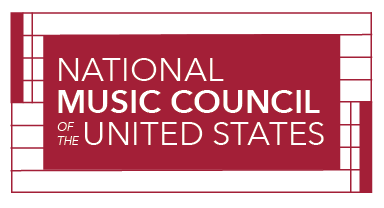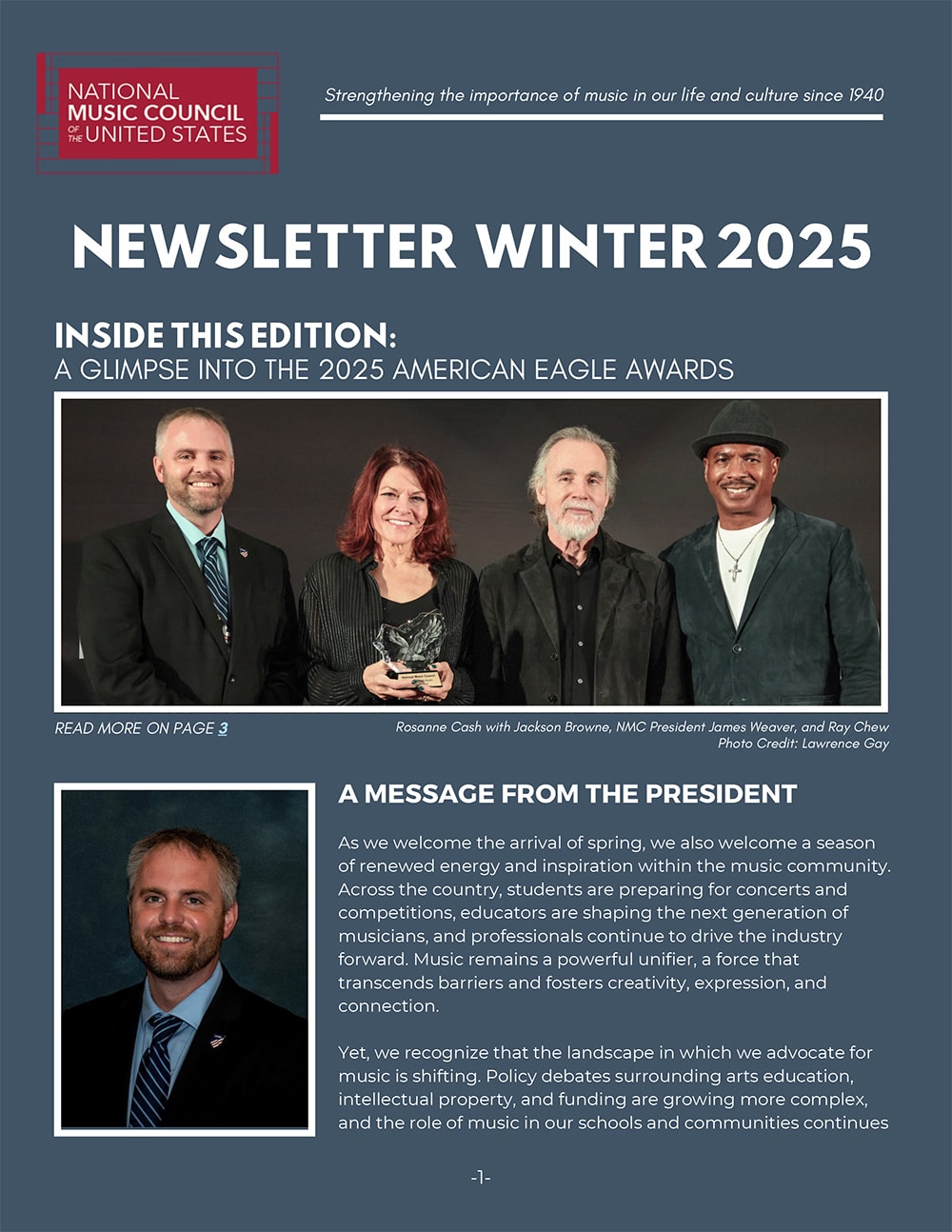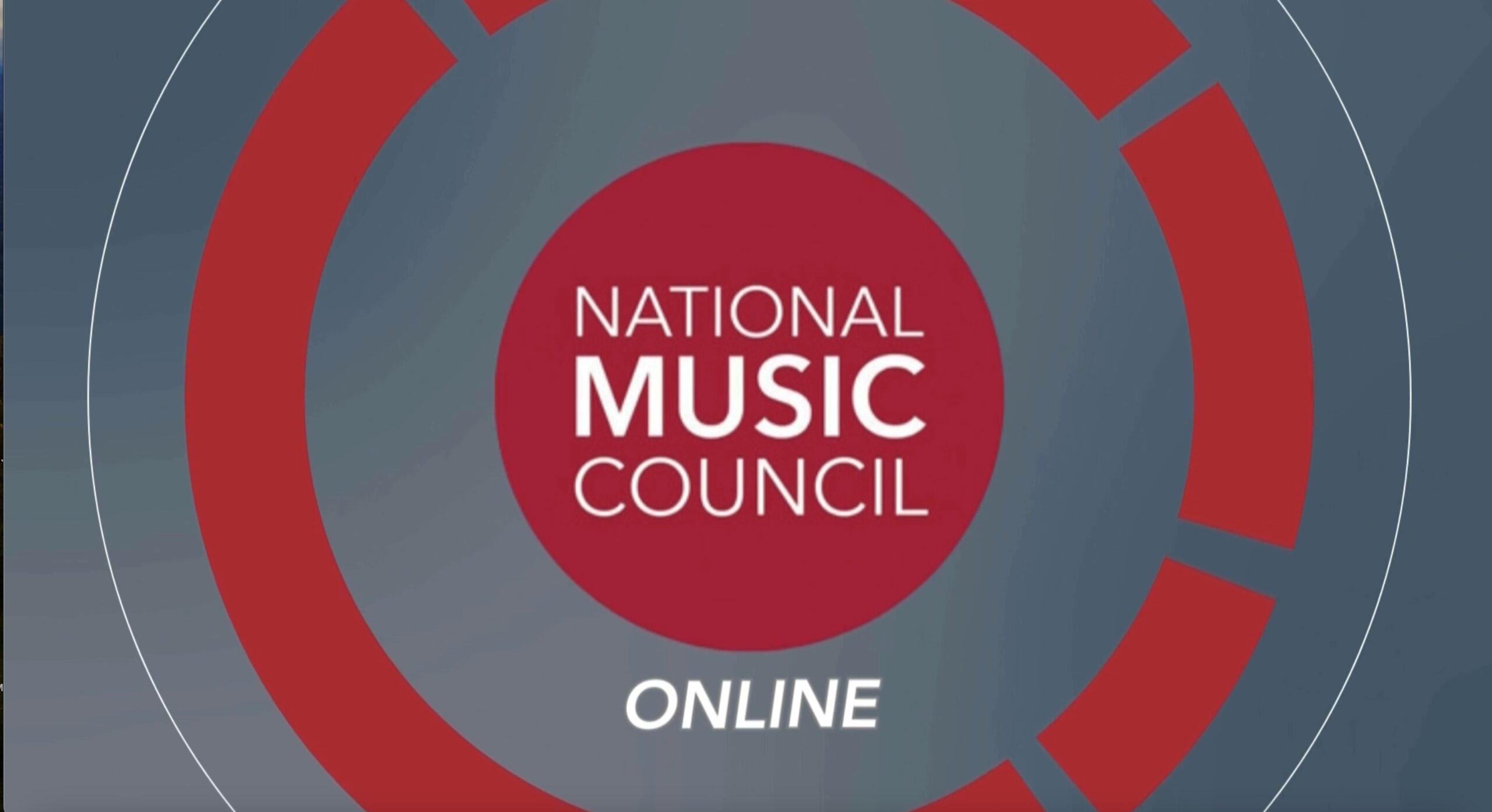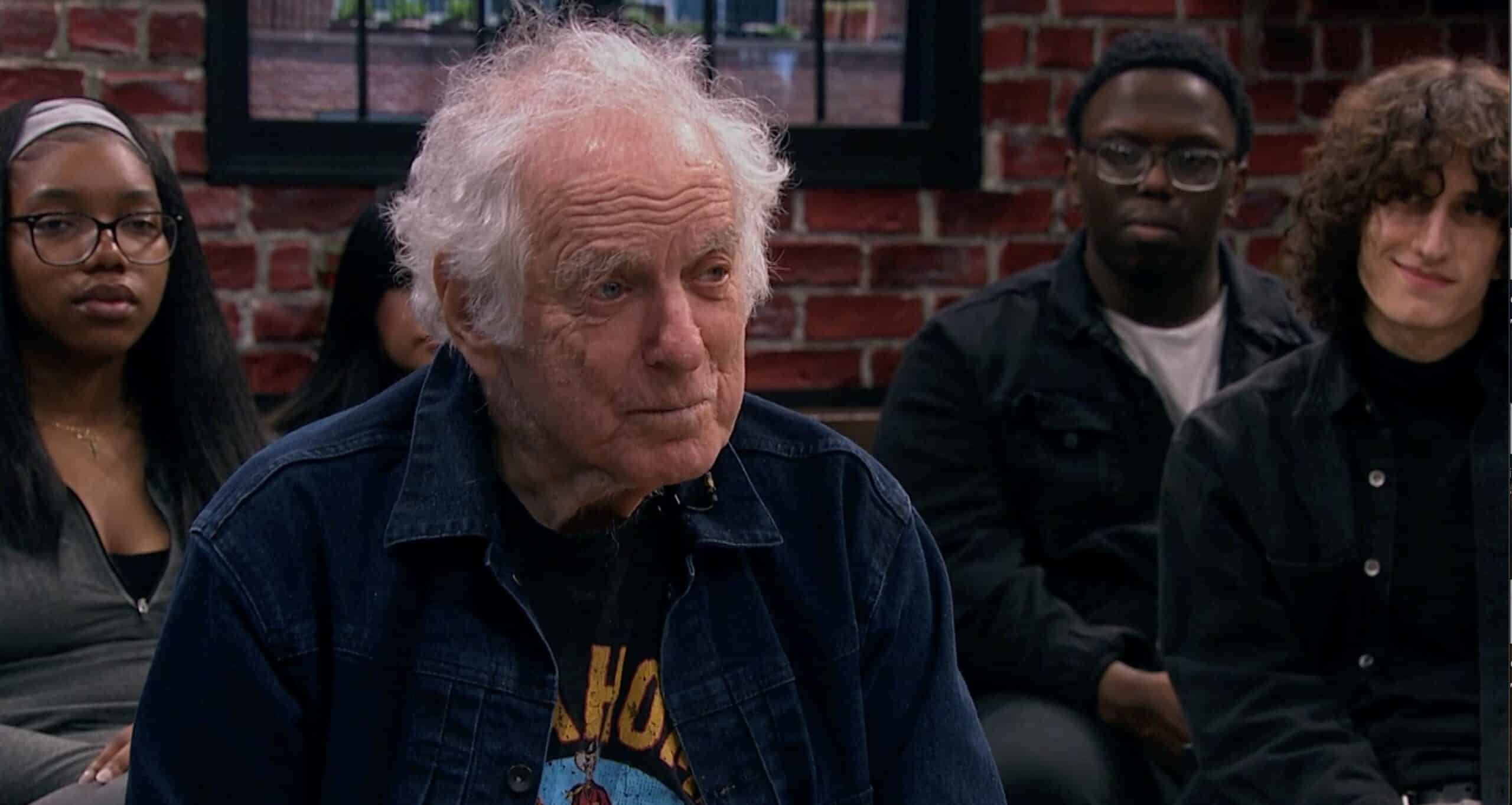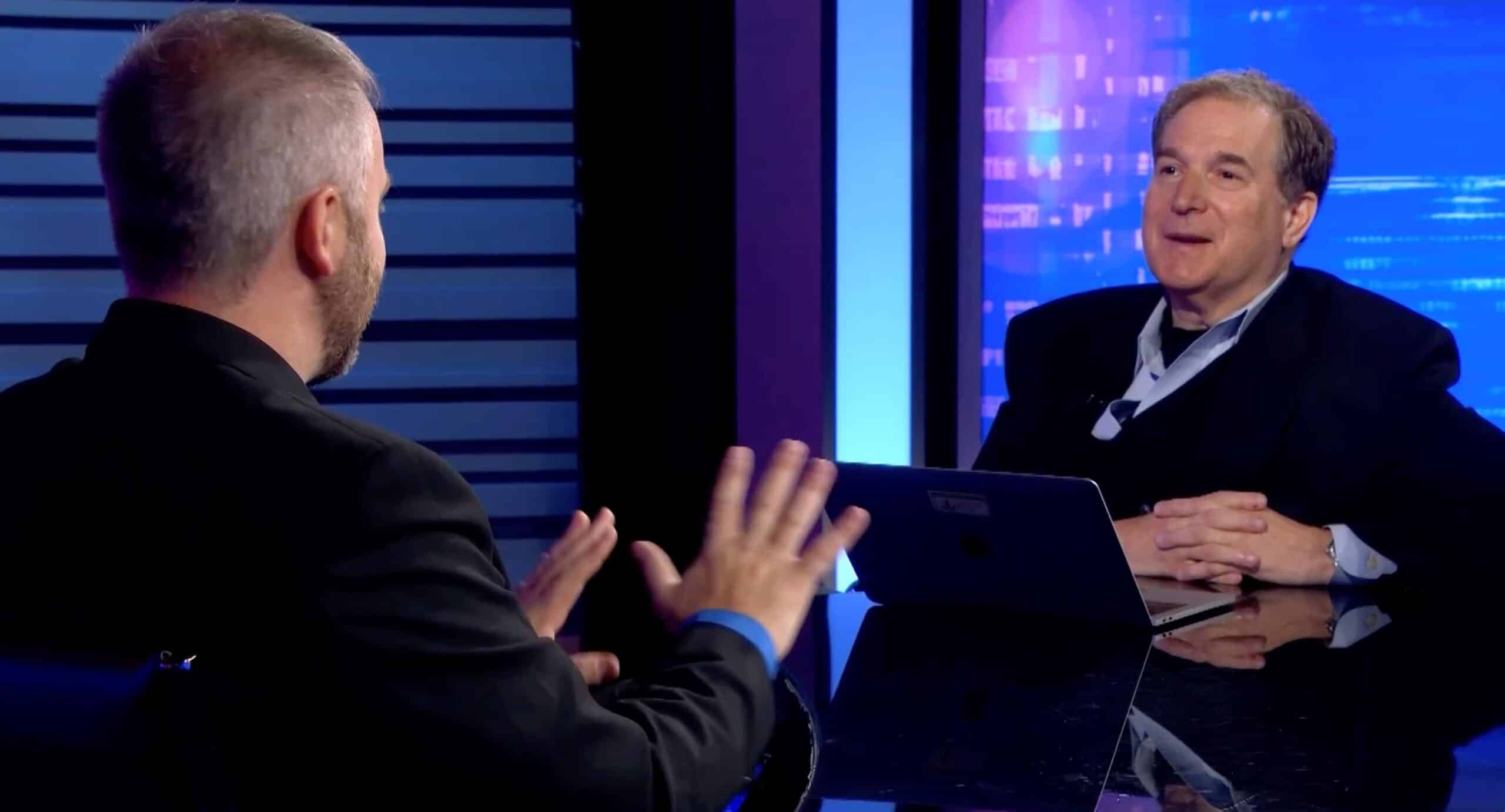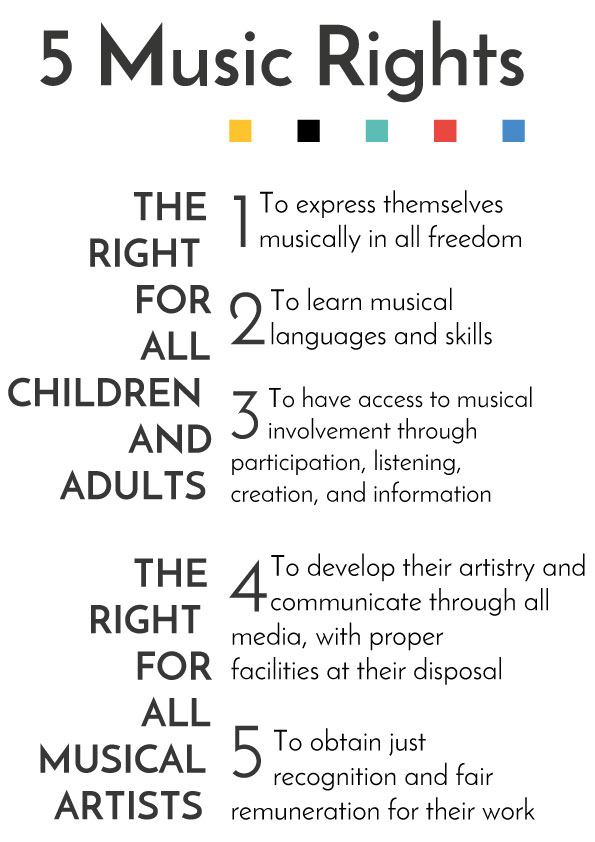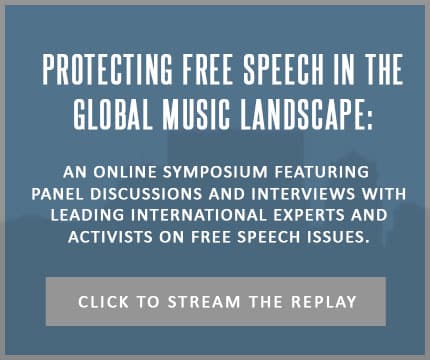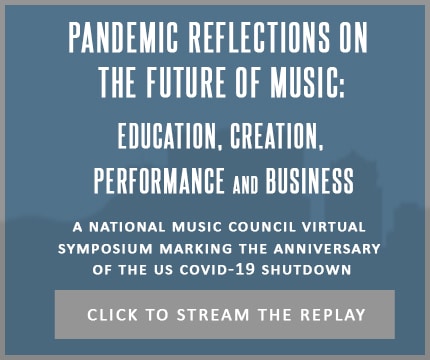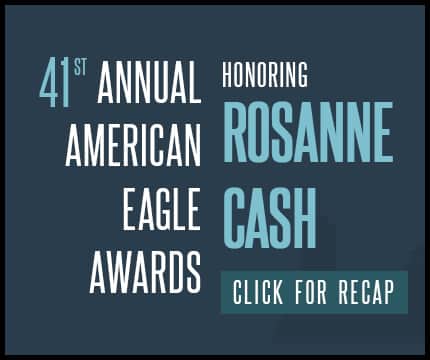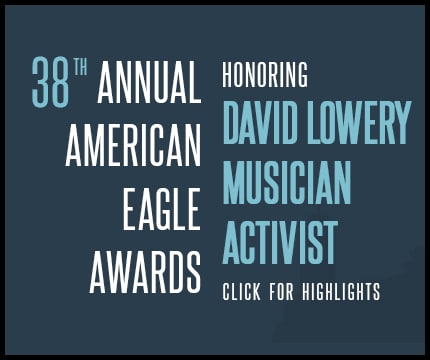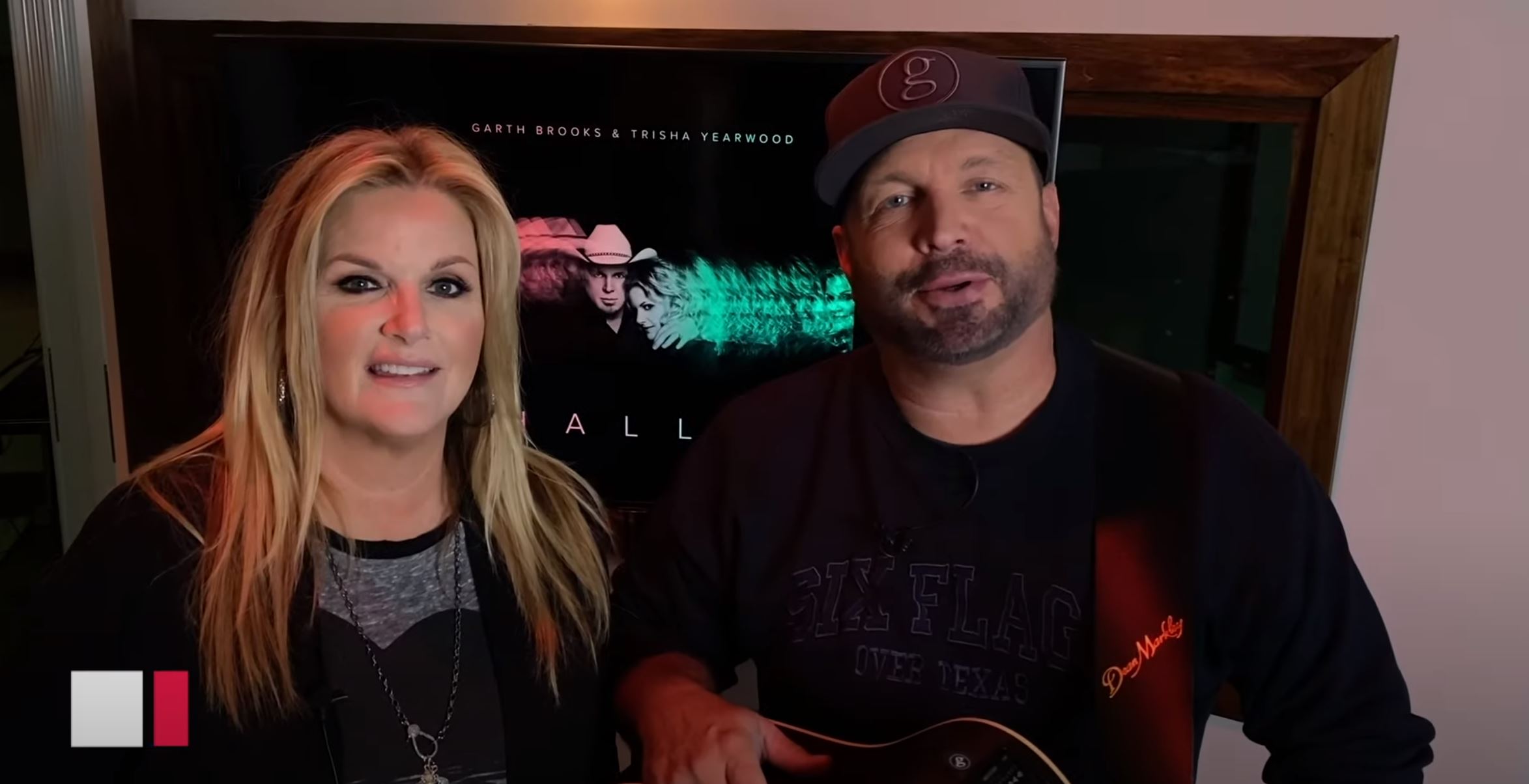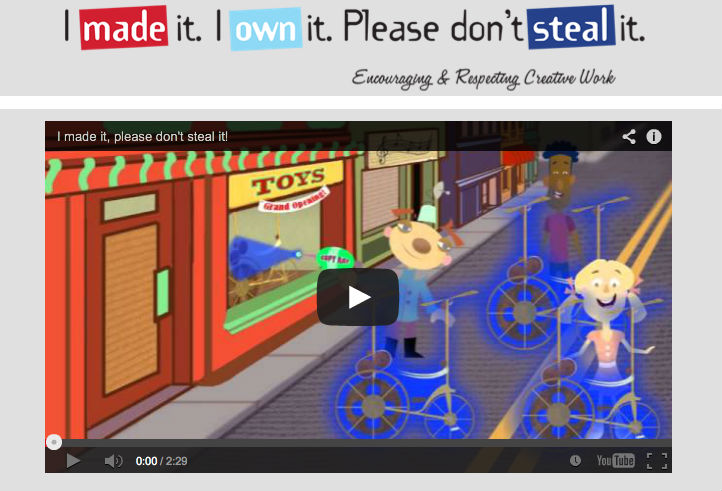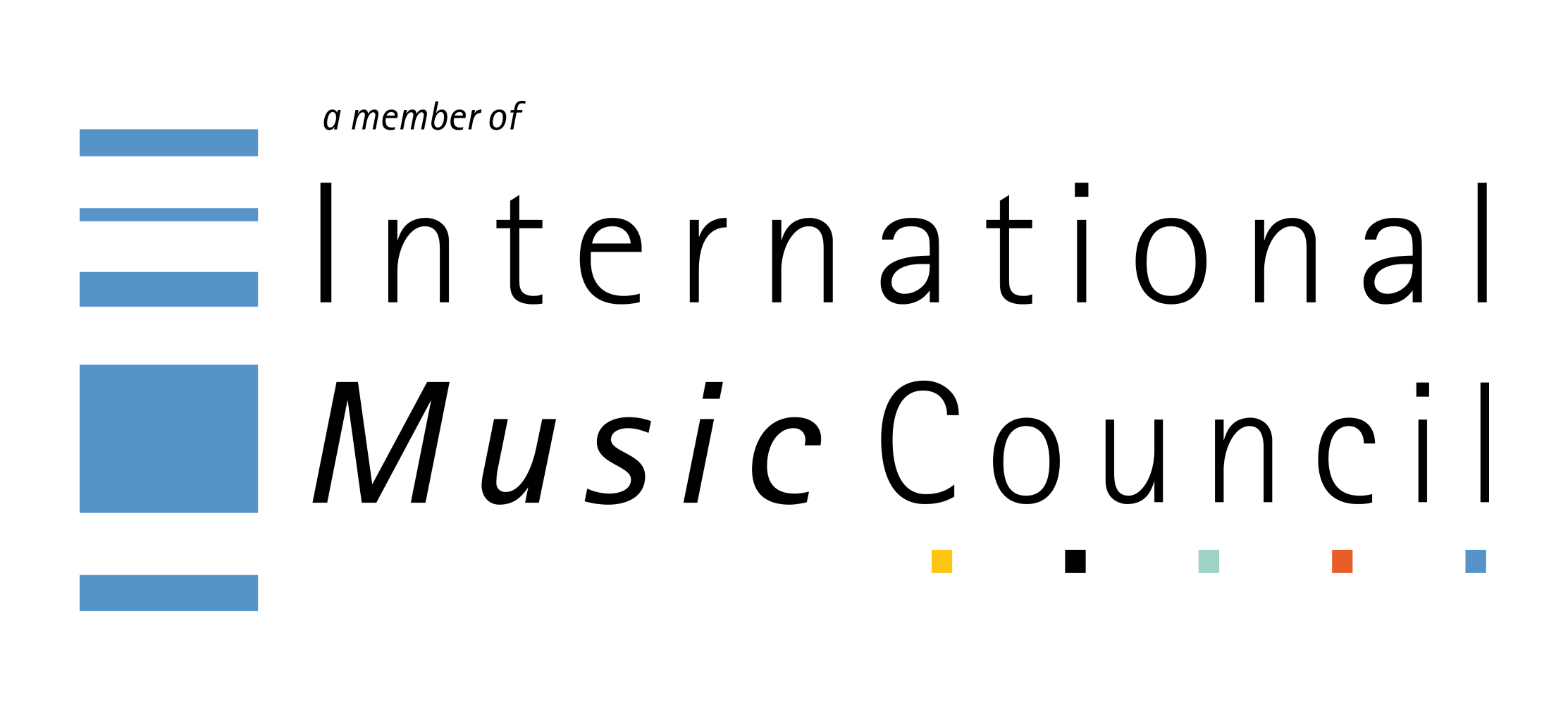Music, Politics & History
A Briefing Paper for the NMC/IMC Symposium on the Protection of Speech in Music
March 3, 2023
© Charles J. Sanders, 2023
Chair, National Music Council of the USA
We’ve all seen the current headlines from around the world. Musicians and composers attacked as rabble-rousers and enemies of the state. Singers arrested, their performances banned as dangerous, un-patriotic or sacrilegious. Most recently, we’ve even seen lethal attacks committed against music creators for refusing to perform, or simply for attempting to entertain, not even to proselytize or lampoon.
No matter our individual political, religious, or musical affiliations, the mission of the global music community is clear. We must quickly and effectively formulate ways to help curb this despicable trend.
The National Music Council of the United States (NMC), through its collaborative relationship with the International Music Council (IMC) and IMC’s global membership, are in the forefront of the movement to explore ways to assist in addressing this dilemma. NMC also believes, however, that in focusing on that task we must recognize that such dangers have plagued humankind’s composers and troubadours for centuries. Finding sustainable solutions to this newest spike in violence and repression, then, will require our community to evaluate approaches to these threats with a careful eye on history. It is essential to avoid shortcutting the search for effective ways forward, and not to limit the scope of our attentions solely to the upheavals being faced in today’s geopolitical hot spots.
One key message of this Symposium, therefore, is that there is much to be gained by studying the basic dynamics that have always governed the ebbs and flows of freedoms and protections (or the lack of them) extended to music creators by governments and societies, both around the world and across generations. That broader and deeper perspective cannot help but to better inform our understanding of the motivations underlying today’s increasing attacks on the speech rights of creators, and what exactly our community’s most effective responses should be in the digital age.
Unfortunately, many of us in the music community have grown accustomed to limiting our analysis of industry challenges to examining only the artistic and commercial aspects of contemporary music-making. By so narrowing our focus, we have for decades failed to incorporate into our thinking the most basic element of what makes music perhaps the most volatile artistic and commercial medium of all: its power to evoke emotional, even visceral responses from the listener simply by hearing it. It is renewing our understanding of that power which must be at the root of our efforts to devise solutions, quite apart from issues of art and economics.
The historical pattern of musical repression is a simple one to understand, at least on its surface. Music’s dual, facile ability to serve as both a powerful tool of propaganda and as an existential threat to power structures and political leaders has made it a prime focus of nervous governmental concern over the entire span of history. As a result, when it comes to music, whether we’re dealing with instances of governmental coercion, suppression, violence or all three in combination, whatever we are seeing now the world has seen before. That fact itself creates an opportunity for more expeditiously finding the best way forward.
Throughout history, music creators and performers have not only been frequently subject to pressure to conform and participate in governmental propaganda efforts, but also to repressive actions up to and including murder to enforce the silence of those dangerous, high-profile individuals who will not comply. In many cases, this effectively neuters the most persuasive voices of protest, while at the same time setting an example of what happens to those less visible citizens who choose dissent. The repression of music and creators is a government’s way of warning all of its people, “if this is what we’ll do to them, imagine what we’ll do to you.”
With the certain knowledge that this dynamic is unlikely to change any time soon, we are faced with the challenge of determining what has worked in the past to blunt its brutal, sometimes fatal effects on music creators and performers, and to evaluate what may have changed in a digital world to create new workarounds. Perhaps technology has provided new approaches and ways to undercut the most pernicious aspects of the coercion and repression that we’ve seen in the past. Perhaps the opposite is true. We simply don’t know yet, and the process of finding out will not be easy.
Nevertheless, it is a crucial process that it is our responsibility to undertake, and it begins with the aphorism “past is prologue.” Stated another way, as the great novelist William Faulkner once sagely observed, “The past is not dead. It is not even past.”
Table Of Contents:
- Illustrating the Enormous Emotional Power of Music, Starting With Ancient Religious and Tribal Traditions
- The Dichotomy of the Bagpipes
- Songs of Revolution and Defiance
- Songs of Abolition and in Support of the Union in the US Civil War (1861-1865), and their Effect on the US Civil Rights Movement in the 1950s and 60s
- Songs Censored, Welcomed and/or Coerced by the Government: World War I
- Songs of Union Organizing and the Depression
- The Banning of Jewish and Black Music in Nazi Germany, and Japanese Censorship of Unacceptable Lyrical Content
- The Power of Songs of Hate in World War II
- The Murder of Composers and Musicians During World War II—Terezin Concentration Camp
- The Power of Songs to Inspire Anti-fascism During World War II
- The Banning of Songs in the Aftermath of WWII
- Music Repression in the People’s Republic of China and The Cultural Revolution
- Extreme Violence Against Music Creators: The Pinochet Regime in Chile (1973-1990) and the Pol Pot Regime in Cambodia (1975-1979)
- Music Censorship In Islamic Nations: The Iranian Revolution of 1979
- What Happened When Iran Criminalized Music After The 1979 Islamic Revolution?
- The Role of Music in Apartheid South Africa
- Music and Repression in The 21st Century
- Some Final Thoughts
- Bob Marley (Playing for Change): Redemption Song
The Search for Answers
Return to Top
So where do we begin in trying to unravel the mystery of music’s powerful effects on social and political issues throughout history, while at the same time gaining a better understanding of governmental responses –past and present– to co-opt, silence or dispose of the musically outspoken? Further, how do we then use that knowledge to the future benefit and safety of the music community, and the world?
For starters, it requires a survey of the music itself, an exploration of a few, ultimate examples of its power to shape political landscapes from ancient times to the present. In this way, we can begin to provide ourselves with a more robust, baseline knowledge of this subtly complex subject, which will further help us to define the scope of considerations that must be included in forging better solutions.
- Illustrating the Enormous Emotional Power of Music, Starting With Ancient Religious and Tribal Traditions
- The Dichotomy of the Bagpipes
- Songs of Revolution and Defiance
- Songs of Abolition and in Support of the Union in the US Civil War (1861-1865), and their Effect on the US Civil Rights Movement in the 1950s and 60s
- Songs Censored, Welcomed and/or Coerced by the Government: World War I
- Songs of Union Organizing and the Depression
- The Banning of Jewish and Black Music in Nazi Germany, and Japanese Censorship of Unacceptable Lyrical Content
- <The Power of Songs of Hate in World War II
- The Murder of Composers and Musicians During World War II—Terezin Concentration Camp
- The Power of Songs to Inspire Anti-fascism During World War II
- The Banning of Songs in the Aftermath of WWII
- Music Repression in the People’s Republic of China and The Cultural Revolution
- Post-World War II Music Repression in the United States
- Extreme Violence Against Music Creators: The Pinochet Regime in Chile (1973-1990) and the Pol Pot Regime in Cambodia (1975-1979)
- Music Censorship In Islamic Nations: The Iranian Revolution of 1979
History teaches that music is indisputably an art form of awesome power, one that demands the respect of governments, societies, and all who attempt to harness it as a means of political or social influence. Most who have devoted their lives to the musical disciplines understand that truism to their core. But re-examining even our most unshakable beliefs can further our understanding of why we perceive them to be so accurate.
When it comes to illustrating music’s power as a force in human lives throughout history, there are few better examples than the sacred, tribal-based melodies and chants that have been culturally engrained in generation after generation over centuries. Such musical works most often reflect a group’s deepest emotional ties, including belief in a particular deity, love of an ancestral home, reverence for beloved family members living and departed, and grief over shared tragedies. Combined with the power of group singing, praying, marching, or simply listening, these foundational musical works have the gravitas to produce feelings ranging from ecstatic joy to unspeakable sadness, and from universal spirituality to shared rage.
It suffices to say that the continuing abilities of the following, representative musical examples –hundreds or thousands of years after their creation– to spark or manipulate extraordinary emotional reactions among group members is perhaps the best and most obvious proof we have of music’s power:
Native American:
Judaic:
Armenian:
Islamic:
Pacific Islands/Melanesia:
Maori (ANZAC):
Norse:
Consequently, governments are particularly attuned to and wary of the power of these sacred musical works, and in the past have frequently surveilled their uses carefully, promoting or suppressing them as political expedience demands.
As one historical example among many regarding such governmental monitoring, the culmination of the Native American genocide in the United States at the end of the 19th century is instructive. That horrific era closed with, among other unfortunate instigations, the banning by federal and local authorities of “Ghost Dancing,” a messianic Native American movement based upon dancing and spiritual singing that it was feared would lead to renewed “Indian uprisings.” The ban ultimately led to the massacre by US soldiers of three hundred recalcitrant but unarmed Lakota ghost dancers, singers and their families (including many young children) at Wounded Knee, South Dakota in 1890, and ushered in a period of suffering that continues today. The following clips aid in our understanding of that devastating chapter in American and global aboriginal history, and music’s role in them:
Ghost Dancing Dramatization
Ghost Dancing History
It is further apparent that even the allusion to these ancient, cultural melodies in new, modern compositions can unleash enormous emotional reactions, especially regarding shared trauma over tragedy. The following musical examples illustrate the derivative power of such new works, their similar ability to spur extraordinary emotional reactions, and their likelihood to prompt similar governmental concerns:
John Williams “Schindler’s List” (musicians moved to tears)
Samuel Barber: Adagio for Strings (Choral)
Use of Adagio for Strings in the Anti-War Film “Platoon” (Academy Award Best Picture 1986)
All that aside, however, perhaps it was the great French novelist Victor Hugo who best expressed the reasons underlying the primal governmental fear of music’s terrifying power: “Music expresses that what cannot be said,” he mused, “and about which it is impossible to remain silent.”
The world’s militaries have for centuries been aware of the enormous power of music on the battlefield. They have therefore in the past sought to tightly control its use, from the management of Roman trumpeters on the road to Germania in the first century, to the use of “gangsta” rap and thrash metal in the headphones of 21st century fighter pilots.
The following two parallel uses of traditional Scottish bagpipes in wartime, with entirely different results, are noteworthy for both their important historical significance and their illustration of the lengths to which governments will go to exercise control over music’s use and effect in war. (For a background on the bagpipe military tradition, see the following):
The Bagpipe MilitaryTradition
The first clip below dramatizes the role that music played in spurring the miraculous World War I Christmas Truce of 1914, a spontaneous demonstration of humanity on the battlefield that so angered military leaders that the participants on both sides were severely punished by their respective commanders. The Scottish pipers were specifically noted by the British high command as the potential ringleaders of this Christmas Eve fraternization among combatants, and they suffered accordingly.
The second clip illustrates the subsequent refusal of the Scottish Highland bagpipers to abide by the British ban on the use of their instruments twenty years later during the D-Day invasion of World War II, a prohibition based upon safety concerns stemming from the large number of bagpiper deaths that had been suffered in the prior World War. In this latter case, the legendary effect that such “insubordination” had on the troops storming ashore (being led by their pipers as tradition dictated) is still being celebrated. Hard and fast consistency is difficult to come by in the study of musical suppression during wartime.
Musical Dramatization of The Christmas Truce of Dec 24, 1914
The Highlander Bagpipers on D-Day, June 6, 1944
Some secular songs, especially those connected to revolutionary fights for freedom, liberation, and/or defense of home, can carry a level of potential power –and a danger of enormous and uncontrollable political influence– that goes beyond the force of even the sacred compositions and examples noted above.
Perhaps the most famous of these secular works is the French national anthem Le Marseilles, the battle theme of the late 18th century French Revolution. Napoleon so feared its power that he futilely attempted to ban it a generation later. Its striking use in the classic film “Casablanca” in the early 1940s (reflecting its defiant, real-life use by partisans throughout Nazi-occupied France at the time– a full 150 years after it was composed), stands as a monument to the influence of music to emotionally inspire pride and political defiance in times of national and global catastrophe.
The Film Casablanca and Le Marseilles:
That same power can also be found in the 1936 battle song of the Spanish Civil War republican volunteers, No Passaran. Presented in an updated form below, it still retains the ability to conjure up the call to action that helped prevent the Nazi supported fascist army of dictator Francisco Franco from capturing the Spanish capital of Madrid in 1937. Franco banned the song immediately after taking power (along with all other Republican music of the Spanish Civil War), which he deemed still capable of setting off a powder keg of rebellion over the entire course of his subsequent, four-decade rule.
Songs of the Spanish Civil War: No Passaran
Few eras and movements in world history were more affected by the power of music than the American Civil War. In the bloody struggle to end slavery in the American South, a half million people lost their lives between 1861-1865. It should be remembered, however, that even prior to the outbreak of military hostilities, the possibility of open conflict had been escalated considerably when the Southern Confederate states banned –as an offense punishable by death– the trafficking in anti-slavery speech of every kind including music.
Among the songs attempted to be suppressed in the South that eventually made an enormous contribution to the growth of the anti-slavery Abolition Movement in the North was the hymn- based anthem Amazing Grace, written by slave ship captain John Newton as an attempt at repentance for his lifetime of profiting from human bondage. The famously popular 1960s version of the anthem recorded by singer Judy Collins may be found here:
Judy Collins: Amazing Grace
Seizing on the realization that the banning of biblically themed songs by the Confederacy was a public relations nightmare for the South (as well as proving extremely difficult to enforce), the genius of 19th century African American composers and religious leaders was to increase the process of coding their political messages in hymns through biblical references. Specifically, they began lyrically tying songs to the Old Testament narrative of the escape from Egyptian bondage of the Israelites.
Two of those still famous, coded songs, Go Down Moses and Oh Mary Don’t You Weep, presented the opportunity to obliquely deliver a pair of crucial messages to slaves, slave owners, and Abolitionists all at once: we are pleading for an end to slavery, and if that end does not come soon, tragedy will surely follow for the South:
Paul Robeson, Go Down Moses
Koryn Hawthorne, Oh, Mary Don’t You Weep
So inspiring and effective was this biblical coding that a century later, the great Jamaican musical artist and global icon Bob Marley was still making reference to it, singing in one of his “Get Up, Stand Up” masterpieces, Exodus, the lyrical plea “we need another brother Moses.”
Bob Marley: Exodus
Following the defeat of the Confederacy in 1865 and its subsequent adoption of “separate but equal,” Jim Crow racial segregation laws (named after a minstrel show music character created by blackface performer Thomas “Daddy” Rice before the war), little changed in the continuation of unofficial bans on songs of racial protest in the South. If anything, political repression of music (especially in New Orleans, where the racial mixing among musicians was a constant source of grief for the guardians of Jim Crow rule) grew worse.
By the mid-20th century, however, hymns had re-emerged as a key element in a new, burgeoning civil rights movement that featured musical protest as perhaps its most effective tool of both organization and persuasion.
By way of example, in one of the most moving and effective pieces of musical propaganda in film history, director Preston Sturges included the following scene –dripping with political irony– as the centerpiece of his classic film “Sullivan’s Travels.” This performance of Go Down Moses by Jess Lee Brooks represents one of the great highlights of American cinema. The film, quite naturally, was widely though unofficially banned throughout the South in 1941:
Go Down Moses – Let My People Go (Sullivan’s Travels—Preston Sturges 1941)
An Example of the Film Portrayals Preston Sturges Was Fighting Against (Judy Garland in a Blackface Minstrel Performance in the film Crazy Eyes- 1938):
Another landmark musical work, written by New York City high school instructor Abel Meeropol and recorded by iconic jazz singer Billie Holiday in the mid-1940s, also stands as one of the bravest statements against racial segregation and violence of the 20th century. For decades, the song Strange Fruit was generally banned by US broadcasters from the airwaves, and performances of it prohibited by nightclub owners, due to the brutal frankness of its message that still both startles and moves audiences today:
Billie Holiday: The History of Strange Fruit
Progress in advancing civil rights, however, still remained slow. The great jazz pianist and singer Nat Cole gave this interview in 1956 after being physically attacked on the stage at a segregated, Birmingham, Alabama concert by white supremacists seeking to divert his efforts to “degrade their culture.”
Interview with Nat Cole following white supremacist attack (1956)
The following year, beloved jazz pioneer and musical genius Louis Armstrong gave the following interviews concerning his reluctance to participate in future US Government-sponsored “good will” tours if the White House refused to intervene in ensuring the de-segregation of public schools in Little Rock, Arkansas. In part as a result, President Dwight Eisenhower capitulated:
Ken Burns Jazz Documentary: Armstrong on Segregation (1957)
In one of the most instructive of all statements on the importance of music to the American civil rights movement, Dr. Martin Luther King himself spoke eloquently (in perhaps his greatest speech) by singling out We Shall Overcome as a crucial element in the fight for racial equality in the United States:
Dr. Martin Luther King speaks about singing We Shall Overcome (Mahalia Jackson vocal)
Finally, it is indeed noteworthy that following a vicious beating by police in Shreveport, Louisiana for allegedly demanding food service from a segregated restaurant while on a concert tour in 1963, African American soul and rock music superstar Sam Cooke reacted to the assault by writing one of the most uplifting and optimistic protest songs in history. The song was deemed “too political” at the time for broadcast, and radio stations (especially those in the South) refused to play it.
Nevertheless, though Sam Cooke had been dead for over four decades by the time Senator Barack Obama was elected the first African American President of the United States in 2008, that evening the president-elect walked out to address the crowd of his supporters in Chicago’s Grant Park only after A Change Is Gonna Come was played over the sound system. Music had without doubt helped make such a transcendent moment possible:
Sam Cooke: A Change Is Gonna Come w. Barack Obama
Realizing the enormous power of music to stir feelings of patriotism, governments have long been known to encourage and/or coerce songwriters and artists into creating and recording anthems in support of declarations of war, armed forces conscription, and the sale of war bonds.
The US Government under President Woodrow Wilson, in fact, actively pressured the American music industry to support his 1917 plan for US intervention in World War I, an unpopular effort until Tin Pan Alley music publishers and their immigrant songwriting stars such as George M. Cohan and Irving Berlin were pressed into action. The Army did so through unsubtle suggestions that these newly-wealthy, immigrant stars needed to prove they truly “belonged” in America. In a US Army-led public relations campaign urging patriotism, songs such as Over There and Give My Regards to Broadway helped stir public sentiment in favor of US involvement in the war, a conflict that immediately resulted in over 100,000 US combat deaths in just one year.
The same had been done earlier in World War I in the UK and Australia, especially regarding the use of the song Waltzing Matilda as a recruitment tool. The combined armies of Australia and New Zealand (ANZAC), at whom the overall Waltzing Matilda campaign was aimed, suffered catastrophic losses in a short period of time– just as the Americans endured three years later.
Give My Regards to Broadway (George M. Cohan)
Over There (George M. Cohan)
Let’s All Be Americans Now (Irving Berlin)
And the Band Played Waltzing Matilda//Waltzing Matilda Original
Of great significance, the US Government also combined these coercive propaganda efforts with the passage of the Sedition Act of 1917, which criminalized virtually all US anti-war activity– including songs and musical performances criticizing the war effort. Songs such as I Didn’t Raise My Boy to Be A Soldier quickly disappeared from national attention when public performance in wartime of controversial lyrics became a genuine threat to writers and artists.
I Didn’t Raise My Boy to be a Soldier
and related US Library of Congress analysis
Following the end of World War I, union activity in the US began focusing on the use of songs as valuable organizing tools. It was quickly discovered that hundreds of voices of Harlan County, Kentucky coal miners singing Which Side Are You On? did the work that thousands of union organizers could never accomplish.
Panicked coal mining companies, backed by industrialists from various other manufacturing and mining sectors in the US, sought to get union songs banned as tools of communist sedition. The effort failed, although the emergence of radio in the 1920s led to an unofficial ban on “socialist workers” music that one might argue remains in effect a century later.
Which Side are You On?
In 1932, following the global crash of stock markets and the commencement of the Great Depression, US World War I veterans marched on Washington, DC to request early payment of the service bonuses they had been promised and now needed to feed their starving families. When the US Army violently disbursed its own veterans on the streets of America’s capital, songwriters Yip Harburg and Jay Gorney wrote a protest song so powerful that it virtually propelled reformer Franklin D. Roosevelt into the White House.
World famous American performer Rudy Vallee, noting the enormous social and political influence the song was having, became so nervous and reluctant to keep performing Brother, Can You Spare a Dime that he insisted on doing a spoken-word introduction explaining why he was singing “this new song from Americana” on his radio show, and why he had recorded it for sale. The fear of governmental backlash was palpable throughout the music industry during the enormous social and political upheaval that marked the Depression in the 1930s.
Rudy Vallee: Brother Can You Spare A Dime? (Including Spoken Explanation)
With the rise of fascism in Germany and Austria during the 1930s, Nazi eradication of music deemed to be “degenerate” became the norm, eventually resulting in the outright banning of the works of Jewish and black songwriters and performers. The Nazi’s music suppression policy was essentially built upon the writings of 19th century German composer Richard Wagner (dictator Adolph Hitler’s musical hero), who had campaigned in 1850 against the works of Felix Mendelssohn and other Jewish classical composers whom he claimed were “mongrelizing” traditional German music and culture.
The removal of the works of Mendelssohn, Brecht, Weil, Offenbach, Mahler, Schonberg, Ellington, Calloway, Goodman, Shaw, Basie and others for the same reasons took final effect in 1938, though that process had begun as early as 1933. The purpose of these bans, suspected then and confirmed in retrospect, was to further the demonization of Jewish citizens of Germany (and the Jewish/Negro/Socialist influence they allegedly brought to “the Fatherland”) as part of the overall Nazi scapegoating strategy– a plan utilized to organize and consolidate the party’s political power. That strategy ultimately culminated in the Holocaust.
Degenerate Music Banned in Nazi Germany
https://www.dw.com/en/the-nazis-take-on-degenerate-music/a-16834697
In fascist Japan, meanwhile, the Japanese Imperial Army also took steps to ban music deemed lyrically or culturally unacceptable, including an extremely popular, early 20th century Japanese military song known as The Snow March that criticized the Army’s callous failures in caring for its troops. The fanatical “cleansing” of East Asian culture in Japan’s traditionalist image –including the punishment of Japanese dissenters– would eventually lead to wide-scale catastrophe in a Pacific War and genocide (especially in China) that lasted well over a decade between 1931-1945.
Yuki No Shingun (The Snow March)
Recreation of Japanese “Victory” March Following the 1937-38 Nanking Massacre
In addition to the tight controls exercised in Nazi Germany through music suppression, the office of Propaganda Minister Joseph Goebbels was also acutely aware of music’s power as an offensive propaganda weapon. This was especially true regarding the search for a Nazi anthem that could serve as a marching song, and as a parallel to the “death songs” that were utilized by US and Native American military units in the brutal Indian wars of the American west, an era of prior genocide which the Nazis had carefully studied. Particularly infamous among such US military compositions was the theme of the US Seventh Cavalry under the command of Colonel George Custer, which was played not only to inspire pride in his troops, but also to signal an all-out attack in which no mercy was to be shown. That song, known as The Gary Owen, was played as a prelude to Custer’s inhuman attack on a peaceful Native American encampment on the Washita River, dramatized in the film “Little Big Man.” Custer was later killed (along with his entire command) at the Battle of the Little Big Horn, in part as revenge for the Washita massacre.
The Gary Owen Theme of the US Seventh Cavalry Depicted in the film Little Big Man
Potentially with The Gary Owen and the “martyred” Custer in mind (the Seventh Cavalry song was included in the world famous Buffalo Bill’s Wild West shows that regularly toured Europe, playing to huge crowds well into the early 20th century), Goebbels and Hitler personally chose the composition known as Die Fahne Hoch written by SS storm trooper Horst Wessel (who had been killed in pro-Nazi street fighting) as both the theme of the Nazi Party and as the inspirational anthem of the SS execution squads. It was utilized at all major Nazi events during the 1930s, and as the major musical theme in director Leni Riefenstahl’s cinematic love letter to the Nazi regime, “Triumph of the Will.”
The first American film to overtly attack Naziism, “The Mortal Storm,” likewise used an English version of the song in a very powerful scene illustrating the real-life Nazi use of music to intimidate:
Horst Wessel Lied//Der Fahne Hoch in the anti-Nazi film “The Mortal Storm” (1940)
[Notes of potential interest: In a deliberately ironic twist, director Francis Ford Coppola switched the “Vietnam death song” of the US Seventh Cavalry (the “Air Cav”) as depicted in his antiwar film “Apocalypse Now” to the Richard Wagner composition Ride of the Valkyries. In another bit of related irony, Jewish Broadway composers John Kander and Fred Ebb referenced the tone and effect of Die Fahne Hoch so effectively in “Cabaret” with the anti-Nazi song Tomorrow Belongs to Me, that the latter is frequently mistaken for a genuine Nazi anthem by neo-Nazi groups.]
Musical Counter-Propaganda: Tomorrow Belongs to Me (Cabaret)
During the Second World War, among the more than six million Jews, Roma, homosexuals, and political dissidents murdered by the Nazi regime, Hitler sent literally thousands of musicians and composers to their deaths in concentration camps. Some were killed for their political or social affiliations, but most simply for reasons of their religious or ethnic backgrounds and their “un-Germanic” musical talent. A special detention camp near Prague was established at Terezin to house those non-Aryan prisoners who had been prominent in music and the arts. There, their works and musical performances were showcased to the International Red Cross (and to the world via Goebbels’ newsreel propaganda) as comforting proof of acceptable “detainee” treatment by the Nazis. Following such phony shows, the creators and performers were most frequently sent by the Nazis to the Auschwitz-Birkenau death camp near Krakow, where they were killed in the gas chambers.
Holocaust Survivor Describes the Music of Terezin
https://www.youtube.com/embed/tZA3vXdE6tY
Performances at Terezin Recalled by Pianist Alice Sommer
The Music of Terezin Documentary Preview
Performance of the Children’s Opera Brundibar at Terezin (after which nearly every child on stage and in the audience was murdered at Auschwitz-Birkenau)
Turning to the use of music as a tool in the voluntary creation of “positive propaganda” during World War II (often with non-coercive Allied government support), no discussion is complete without reference to the wartime work of British recording artist and international hero Vera Lynn. Performing everywhere from London underground stations during sixty straight nights of Nazi bombings in 1940, to her evening broadcasts to troops in the field until war’s end in 1945, she proved through her musical performances to be a morale boosting phenomenon likely unsurpassed in history. Her life and career are often said to have exemplified the positive power of music in action.
Vera Lynn: We’ll Meet Again
Vera Lynn: Goodnight Wherever You Are
Other noteworthy, Allied-supported musical efforts during the Second World War achieved on a strictly voluntary basis included the following:
Kate Smith (singing an old Irving Berlin composition as requested by President Franklin Roosevelt): God Bless America
Major Glenn Miller (killed while serving with the USAAF/USO): American Patrol
The Andrew Sisters: Boogie Woogie Bugle Boy
Jimmy Rushing/Count Basie: For the Good of Your Country
Judy Garland: Have Yourself A Merry Little Christmas (the brutal Christmas of 1944)
The Soviet “Sacred War” Song
There is indeed a certain irony –as well as sound logic– to the permanent banning of the Horst Wessel Lied/Die Fahne Hoch composition in Germany and Austria immediately following the end of World War II, a prohibition still in effect with only narrow, educational exemptions since 1945. The hate it remains capable of inspiring nearly 100 years following its creation, as demonstrated by the public comments each time it is posted on the Internet, is both astonishing and disheartening.
It’s noteworthy, too, that although the music of Richard Wagner has never been officially banned in the State of Israel since its founding in 1948, it is still rarely performed there without prompting protests over the pain it continues to cause in relation to memories of the Holocaust and Wagner’s vicious anti-Semitism.
The song that was banned in British-controlled Palestine between 1919 and 1948 was the Zionist anthem Hatikvah, which English censors deemed too inflammatory for performance or broadcast. Zionists circumvented the ban by broadcasting the nearly identical Bedrich Smetana composition Die Moldau, from which Hatikvah was derived in the late 19th century.
Music Repression in the Soviet Union and Eastern Bloc Nations
Music was an extremely important element in maintaining morale in the Soviet Union during the Second World War, during which twenty million Russians were killed (mostly during the Nazi invasion begun in 1941). Still, Soviet dictator Joseph Stalin had no compunction whatsoever in banning entire genres of music deemed too decadent for proletariat consumption, including at various times from the 1930s through the 1950s jazz, rock and roll, and all US and western European music in general. Even the great mid-20th century Russian composer Dmitri Shostakovich was regularly subject to detention by the Soviet Government for being too “westernized” in his approach to composition and conducting, a practice of brutal harassment that mercifully ended with Stalin’s death in 1953.
Nevertheless, in the post-World War II eras that followed Stalinism, listening to music that had not been approved by the Soviet Government remained a dangerous practice in Russia and the Soviet satellite nations of Eastern Europe. As a rule, American and other western music was never available through regular distribution channels in those regions until the 1990s, although it was regularly broadcast into those nations by the US and UK intelligence services through Radio Free Europe. Woe to those, however, caught listening.
As a result, various black market, bootleg music distribution networks were established in the Soviet Union starting in the 1950s, employing underground record pressing methods that included using x-ray film cut into discs. These “bone records” were eventually replaced by reel-to-reel magnetic tape and later by more modern music carriers, but the bans on western music were not relaxed until the perestroika and glasnost movements were introduced by Soviet leader Mikhail Gorbachev in the late 1980s.
When Billy Joel became the first major music star of the west to tour the Soviet Union in 1987, he was outspoken in his belief that music had been a key element in building bridges between the rest of the world and the citizens of Russia, who enthusiastically welcomed him. “The people knew rock and roll music in the same way that Americans did,” he remarked. They sang his lyrics back to him. “There was a human connection that only music could have established with those kids behind the Iron Curtain, and it made a difference in this world,” Joel later concluded in his poignant US Songwriters Hall of Fame induction speech.
Juxtaposing Soviet and German Morale Songs of World War II
Bone Records: Music Bootlegs on Soviet X-ray Film
The Underground Soviet Rock Movement
Billy Joel Discusses His Landmark Tour of the Soviet Union in 1987
The disposition toward music of the new government of Communist China in the aftermath of the Second World War tracked the same basic path as in the Soviet Union. Though songs by composers such as revered master He Luting had brought tremendous pride and comfort to the nation in its fourteen year fight against Japanese invasion beginning in the early 1930s, by the mid-1960s Chinese dictator Mao Zedong had decided that western influence in his nation, including its music, needed to be completely obliterated. The new initiative, generally intended to serve as a diversion for Chinese youth from the disastrously failed “Great Leap Forward” agricultural program, was known as the “Cultural Revolution.”
For reasons not completely understood, the Chinese Communist Party was particularly focused on eliminating the influence of two specific composers: Beethoven, and the French modern romantic composer Claude Debussy. Being caught in China listening to their works from 1966-1976, or to virtually any other western music, constituted a treasonous crime potentially punishable by death, comparable to supporting the re-invigoration of western imperialism over the interests of the Chinese people.
Those same two composers, unfortunately for former national music hero He Luting, were two of his principle musical influences. At the time, Luting was serving as president of the highly prestigious Shanghai Music Conservatory. He was nevertheless arrested and subjected to physical and mental torture televised across China, intended to prompt his confession to “spiritual crimes against the People.” Luting refused to break. Famed music critic Alex Ross of the New Yorker has written of Luting that “no musician ever made a braver stand against totalitarianism,” perhaps an overstatement, but a well-meaning one.
Somehow, Luting survived the ordeal, and following Mao’s death in 1976 resumed his career at the Shanghai Conservatory. Other members of the Chinese music community were not so lucky. Lu Hongen, conductor of the Shanghai Symphony, was among an unknown number of Chinese musicians and composers executed for their “cultural crimes.” In Hongen’s case, it was in large part for a refusal to renounce his musical devotion to Beethoven. When violinist Isaac Stern arrived in Shanghai for a series of concerts following the end of Mao’s reign of terror, he could not locate a single piano that had not been destroyed by the government during the ten year Cultural Revolution.
In the years since, widespread appreciation for western classical and popular music in China has been restored as part of a claimed new openness toward global cultural exchange, along with the reinstitution of education programs that prize excellence in musicianship and composition. By 2020, China had become both the largest maker and consumer of pianos in the world (accounting for a staggering 80% of the market), with future hopes of popularizing global appreciation for its own musical culture. And while musical repression has certainly not disappeared in China (especially as regards the Hong Kong democracy movement), the brutally violent aspects of the Cultural Revolution toward music and musicians seems at present to have been replaced with a somewhat more permissive approach.
BBC Report on the Chinese Cultural Revolution
The Music of Mao and the Cultural Revolution
The United States Constitution, including the First and Fourteenth Amendments and their speech freedom guarantees, make it very difficult for either individual US states or the US federal government to enact and enforce outright bans on music and musicians (except potentially during wartime). The private sector in America, therefore, took the lead after the Second World War in repressive musical activities, with corporate record labels, private broadcasting stations (radio, tv, and eventually cable including MTV), and music venue owners openly engaging in unofficial bans against various genres (especially bebop jazz and rock & roll in the 1950s and early 60s) and musicians who actively engaged in “fringe” political causes (such as the Civil Rights movement).
Renown performers such as Billie Holiday, Charlie Parker, Pete Seeger, Woody Guthrie, Burl Ives, Phil Ochs, Nina Simone and even Bob Dylan were sporadically blacklisted and their performances kept from being broadcast for political reasons, while Jim Crow laws and segregation at venues and in record stores helped keep African American music in many regions of the country out of the reach of white audiences and mainstream commerce.
The following clips concerning famed folk singer and songwriter Pete Seeger and his time on the blacklist for various “leftist” activities in the 1940s, 50s and 60s are instructive regarding this era:
The Smother Brothers Discuss the Pete Seeger Blacklist
Pete Seeger Discusses Performing on the Smothers Brothers Despite the Blacklist
Pete Seeger: Knee Deep in the Big Muddy
By the mid-1960s, various unofficial bans against anti-Vietnam War, pro-Civil Rights and drug-related song lyrics were even more stringently enforced by broadcasters and venue owners in many parts of the country, and on nearly all national network broadcasts. That practice receded somewhat by the 1970s, as support for the war waned and political assassinations fomented mainstream political dissent.
For a list of censored songs over the post-war decades in the US, reference to the following websites may be helpful:
Freemuse: The State of Artistic Freedom
https://freemuse.org/media/yk2paxxb/saf-report-2022.pdf
Forty Banned or Censored Records in the US
https://ncac.org/news/blog/turn-that-down-40-banned-and-censored-songs
The Fight Over Censorship: U Discover Music
https://www.udiscovermusic.com/in-depth-features/music-censorship/
With the advent of rap music in the 1980s –the lyrics of which often expressed the anger and frustration of the African American community over racism and related issues in blunt and sometimes expletive-laced language– pushback in the form of attempted censorship and suppression was inevitable. The first group to confront explicit language and extreme violence in lyrical content was the politically well-connected, Washington DC-based “Parents Music Resource Center” (PMRC), which shrewdly attacked rock records rather than rap to avoid accusations of racism. When the group demanded that record companies label albums with “explicit content” stickers, the companies acceded to avoid a public showdown over their defense of “violent, dirty lyrics.”
Tipper Gore: Parents Music Resource Center
John Denver Testifies Before Congress Against PMRC Proposed Music Labeling
Soon afterward, however, the attacks on rap began, too. They were initially focused on the explicit lyrics of the rap group Two Live Crew, whose members were arrested, placed on trial, and acquitted on obscenity charges in Florida. The result was a boost in sales for the band.
CBS News Reports on the Banning of Two Live Crew
Fort Lauderdale Record Store Owner Arrested for Selling Two Live Crew Album
Before long, however, those interested in repressing rap music turned to political content as their focus, rather than alleged obscenity. The following recordings were the subjects of unofficial censorship far more for their political messages than for the expletives included in their songs.
Ice T: Cop Killer
Ice T Interview about Cop Killer
Public Enemy: Fight the Power
NWA: F—K the Police
Rock superstar Bruce Springsteen’s 2001 recording of his song American Skin (Forty-one Shots) decrying the 1999 police killing of Amadou Dialo in New York City, met with similar efforts at banning, including proposed boycotts by the New York City Police Department. Those calls generally went unheeded.
Bruce Springsteen: American Skin (Forty-one Shots)
Following the September 11, 2001 al Qaida terrorist attacks on the World Trade Center in New York City in which three thousand Americans were killed, attention once again turned to issues related to “music in wartime.” While songs mainly in the country music genre calling for responsive military action were immediately popularized, and some songs of incredible power served as poignant remembrances of the dead, one particular incident illustrated that the “anti-sedition” attitudes of World War I could be instantly revived nearly a century later.
While on tour in London in 2003, members of the band The Dixie Chicks criticized US President George W. Bush (importantly doing so while outside the country, a practice deeply frowned upon in American politics) for his expressed intention to expand US military actions in Iraq dubiously in response to the 9/11 attacks. The result was the immediate blacklisting of the popular, all-female country band by broadcasters and venues across the US. Though the group still won several music industry awards in the aftermath, it arguably never regained its footing following the incident, finally resorting to changing the band’s name by dropping the word “Dixie” a few years later.
The following clips are especially pertinent to the 9/11 era:
Toby Keith: Courtesy of the Red, White and Blue
Mary Chapin Carpenter: Grand Central Station
Mary Chapin Carpenter 9/11 Interview
The Dixie Chicks Explain Being “Cancelled”
While extreme violence against musicians and songwriters is by no means a rarity in nations where absolute dictators seize power, two historic examples (beyond those already discussed) are especially harrowing.
Chile: The first took place following the American-backed 1973 military coup in Chile, when fascist dictator General Augusto Pinochet violently overthrew the civilian government of leftist civilian Salvador Allende, assassinating him and taking control of the country by brutal, martial force. The arrest of leftist artists followed immediately, including the high-profile and internationally revered folk singer Victor Jara. Taken to the Santiago soccer stadium with hundreds of other detainees, Jara was tortured, his hands broken as a message to other potential musical dissenters, and executed by being shot over forty times. Revered Chilean poet and lyricist Pablo Neruda died in Santiago a week later, allegedly of natural causes, but is widely suspected (based upon medical evidence) of also having been murdered by the junta. It is unknown how many other musical artists were killed, or simply “disappeared” during Pinochet’s military rule, but extreme music suppression backed by violence continued under his rule for nearly two decades. This was a practice which also spread to neighboring nations during that same era, including Argentina.
Victor Jara: Canto Libre
The Murder of Singer/Songwriter Victor Jara
The Contemporaneous Death of Poet Laureate Pablo Neruda
and
https://www.nytimes.com/2023/02/15/world/americas/pablo-neruda-death.html
Cambodia: The second such political takeover took place in Cambodia shortly after the withdrawal of US military forces from Southeast Asia in 1974 following a bloody, decades-long regional war. Communist extremist Pol Pot, head of the infamous, far-left Cambodian terror organization known as the Khmer Rouge, seized military control of the country in 1975, and began leading a “re-education program” designed to mirror the Chinese Cultural Revolution. It more closely resembled Hitler’s Third Reich. Hundreds of thousands of Cambodians were taken to concentration camps, where mass executions were carried out in the “killing fields” between 1975 and 1979 in an effort to completely rid the nation of “western-based” culture.
It is estimated that 2 million Cambodians, roughly one-fourth of the nation’s entire population, were murdered by the Khmer Rouge, including over ninety percent of the country’s musicians, songwriters and artists. Few examples of brutality on this scale exist in recorded history. Presently, organizations such as Cambodia Living Arts have been working for decades to restore the damage done to the rich musical and cultural traditions of Cambodia, nearly erased by just four years of Pol Pot’s rule.
The awe-inspiring survival story of Khmer Rouge victim Master Arn Chom-Pond, the founder and leader of the Cambodian Living Arts organization who graciously participated in this Symposium, may be accessed on this site. His past remarks may also be found below:
Master Arn Chom-Pond: Music Saved My Life
The Cambodian Genocide (graphic)
Red Rider—Lunatic Fringe (Landmark 1981 Protest/Warning Song)
There has been much debate among Islamic scholars over whether music and musical instruments are forbidden under Islamic law. The treatment of musicians and the level of censorship in predominantly Islamic nations, therefore, differs substantially from country to country, regime to regime, and sect to sect. For discussions of this point, see:
Mufti Menk- Is Music Haram?
Is Music Permitted in Islam?- Dr. Nasir Naik
Sayed Hossein al Qazwini, Islamic Institute of America: A Longer Talk On Eliminating Music From One’s Life
Yusuf Islam (Singer/Songwriter Cat Stevens): Music as Peace
Following the Iranian Islamic Revolution of 1979, the new government under the Shiite Muslim leadership of Ayatollah Khomeini criminalized the act of listening to any form of western music. Record shops and concert venues that had thrived for years under the corrupt but culturally permissive prior regime, were suddenly shuttered. Anyone now caught with music deemed ‘un-Islamic’ could be fined, lashed or imprisoned under the new Iranian Islamic criminal code for causing “corruption on earth,” and many Iranian citizens were arrested for such offenses during Khomeini’s ten years of rule.
Just as in Russia under the Soviets, however, a thriving black market in bootleg western music quickly emerged in Iran to satisfy the market demand of the formerly westernized nation and its music fans. Over subsequent years, music-related law breakers have generally been subject to social humiliation and economic punishment rather than violent retribution. With each changing Islamic political regime, however, have come varying attitudes toward music and its suppression in Iran, making it difficult to predict or evaluate the scope of actual enforcement and effect during any particular period.
In 2022, when Salman Rushdie –the award-winning, India-born novelist who had lived under the threat of a fatwah (death warrant) since it was issued by Ayatollah Khomeini in 1989– was stabbed and seriously wounded in the US, the Iranian Government and press seemed to celebrate. Later that year, following the arrest and death in custody of a young woman in Iran named Mahsa Amini allegedly for wearing her headscarf incorrectly, a protest song written by Shervin Hajipour released on Instagram under the title Baraye led to his own arrest. The detention of several other artists and poets who expressed support for the song, soon followed. Their status remains unclear. The situation for musicians, songwriters and composers in Iran is often referred to as “politically fluid.”
What Happened When Iran Criminalized Music After the 1979 Islamic Revolution?
Return to Top
https://www.euronews.com/culture/2022/05/26/what-happens-when-a-country-criminalises-music
Shervin Hajipour: The Saga of Baraye
Yusuf Islam (Cat Stevens): Peace Train at the 2006 Nobel Peace Prize Concert
- The Role of Music in Apartheid South Africa
- Music and Repression in The 21st Century
Few chapters in the history of human repression are filled with as much positive use of music –as a tool of both dissent and organization– than the bringing to a close of the horrific, fifty-year era of officially sanctioned Apartheid in South Africa. Begun in 1948 as an effort to change South African law into a strict code of racial segregation, the Apartheid era bestowed on the tiny proportion of white Europeans living within the country the exclusive rights to own land, to run businesses, to enjoy public privileges, and to vote. The result was to enable a small minority of white South Africans to dominate and impoverish the vast majority of South Africa’s people.
Following decades of brutality under the Apartheid system, South Africans of color organized themselves under the banner of the African National Congress (ANC), and began in the 1970s to purposefully use music both to expose the abomination being perpetrated and to inspire protest events across the country and around the world. Musicians including Miriam Makeba, Hugh Masakela, Abdullah Ibrahim, Vusi Mahlasela and Johnny Clegg joined together to help build support for the ANC, and for the freeing of its leader –Nelson Mandela– after nearly thirty years behind bars for demanding equal treatment for his people.
International members of the music community such as Harry Belafonte, Peter Gabriel, Yo-yo Ma, and Steven van Zandt later joined with South African creators and artists (whether still living in their home country or exiled elsewhere) in efforts supporting and organizing boycotts against the Apartheid government throughout the 1980s and early 1990s. Those efforts included production of the “(I Ain’t Gonna Play) Sun City” music video project that further raised awareness and voices against Apartheid around the world.
Although protest organizers within and outside of the South African music community continued to be persecuted, beaten and worse, so strong was global reaction in favor of the entire population being guaranteed equal rights that by the early 1990s, the ANC had negotiated an end to Apartheid laws and Nelson Mandela had been released from prison and elected president. The following video clips trace the story of music’s role in securing this celebrated victory:
The Origins of Apartheid:
Stories of Music’s Role in Fighting Apartheid:
Freedom Songs and Apartheid (Pata Pata by Miriam Makeba:
Soweto Blues with Hugh Masakela and Miriam Makeba
Biko (A Tribute to Freedom Fighter Steven Biko) by Peter Gabriel
Artists United Against Apartheid: Sun City
Nelson Mandela Sworn In As President of South Africa (1994)
Many of the most “high-profile” incidents over the past few years concerning political repression and violence related to speech have been centered on the numerous, murderous attacks against reporters and authors, including the assassination in Turkey of Saudi journalist Jamal Khashoggi of the Washington Post in 2018, and the maiming of novelist Salman Rushdie in the United States in 2022. Still, attacks on music creators and performers have simultaneously continued to rise along with these acts of violence against those in the news and print media, and must be the subject of equal attention.
While it beyond the scope of this briefing paper to catalog all these recent, music-related incidents of violence and suppression, the following survey lends credence to the conclusion that the practice has indeed been escalating at an alarming rate:
Vietnam: Two Vietnamese songwriters, Vo Minh Tri and Tran Vu Anh Binh, were convicted and sentenced to four and six years in prison for criticizing the Vietnamese Government via song lyrics posted on an internet website in 2012. At their trial and sentencing hearing, it was reported that an estimated 100 security officials blocked access to the court, and that signal jammers were used in the Court House to block live transmission of news on the proceedings. A decade later in 2020, Reporters Without Borders continues to rank the Government of Vietnam as among the ten most repressive regimes in the world in regard to both politics and the arts.
Vietnamese Songwriters Convicted for Anti-Government Lyrics
https://ifex.org/vietnamese-activists-convicted-for-online-songs/
Rwanda. In 2020, revered Rwandan singer-songwriter Kizito Mihigo, whose songs and recordings had been key in continuing to bring the details of the Rwandan genocide of 1994 to the world’s attention and keeping the memory of it alive, died in police custody under unexplained circumstances. Mihigo’s work had recently been banned in Rwanda, and he was arrested soon after for allegedly trying to flee the country to join a “terrorist” group abroad. Mihigo’s family firmly denied that implausible explanation, and accused the ruling government of complicity in his death to silence the singer’s efforts to reconcile ongoing issues between the formerly warring tribes involved in the mass killings of the past.
Rwanda Music Star Kizito Mihigo Allegedly Commits Suicide in Jail
Ethiopia: In a tragic outbreak of violence in Ethiopia that occurred in 2020, Hachalu Hundessa, a famous singer-songwriter of Oromo descent (the group that ethnically makes up a majority of the nation’s population), was murdered under unexplained circumstances. Hundessa’s songs had long focused on the persecution of and lack of political influence of the Oromo, and their need for self-determination. In the wake of his death, over a hundred and fifty of his supporters and fans died in Addis Ababa rioting, again under circumstances yet to be fully explained.
Ethiopian Musician Hachalu Hundessa Killed
https://www.bbc.com/news/world-africa-53238206
Afghanistan. With the re-taking of power in Afghanistan in 2021 by the Islamic fundamentalist group known as the Taliban after years of bloodshed and war against Afghani and US forces, an all-out assault on music and its performance throughout the nation was immediately re-launched. As part of that campaign, one of the nation’s most beloved and revered folk singers, Fawad Andarabi, was dragged from his home and murdered by Taliban forces, who adamantly insist that music and singing are serious violations of Islamic law unless done so in support of the Taliban’s fundamentalist goals.
The Taliban also made headlines by killing other musicians, comedians, and social commentators, and for destroying the renown Afghanistan National Institute of Music in the capital city of Kabul, which for more than a decade had been training young Afghani women and men in musicianship and composition under the direction of Dr. Ahmad Sarmast. All the school’s facilities and instruments were destroyed.
Miraculously, Dr. Sarmast was able to arrange for the emigration of all of his students and their families (273 people in all) first to Doha, and then to their new home in Lisbon, with the full support of the Portuguese Government. The story of that escape is detailed by Dr. Sarmast himself in his interview as part of this Symposium, which he has graciously permitted us to post on this website.
Taliban Destroys Afghanistan National Institute of Music
Taliban Murders Folk Singer Fawad Andarabi
Hong Kong and Greater China. In 2021, Chinese pop star and political activist Tony Wong was arrested in Hong Kong for allegedly violating laws against performers endorsing political candidates. Similarly, Canadian Canto-popstar and pro-democracy activist Denise Ho has been repeatedly arrested in China and charged with “sedition” for her musical performances in support of re-expanded Hong Kong political autonomy since 2021. Though both were released without further incident, the freedoms and safety of Hong Kong and greater Chinese music creators and musicians remain a concern for democratic watchdog groups.
Denise Ho Arrested in Hong Kong
Tony Wong Arrested in Hong Kong
Russia/Ukraine. Following its invasion of Ukraine in 2022, Russian troops executed respected orchestra conductor Yuri Kerpatenko in the southern region of Kherson, after as leader of the Gileya Chamber Orchestra and the Kherson Symphony, he refused to arrange for a performance to honor and support the Russian forces. It is not yet known how many musicians and composers have been among the thousands of civilians killed in the invasion by Russian forces, who apparently see value in using extreme violence against local creators as an effective way to intimidate the local population. The strategy is certainly not designed to win the hearts and minds of the Ukrainian people.
Russian Troops in Ukraine Execute Orchestra Conductor Yuri Kerpatenko
India: In 2022, Sidhu Moose Wala, an ethnic Sikh and one of India’s most popular rap artists, was assassinated in a shootout in his home province of Punjab in Northern India. Though rival gang violence has been cited as the motivating factor behind the firefight in which at least thirty rounds were fired (19 of which hit the victim), it has also been speculated that the long history of the Sikh separatist movement, and Moose Wala’s mention of the aspirational Sikh homeland of Khalistan in at least one of his recent recordings (the lyrics of which were also filled with gun references), indicate a possibility that regional and national political strife may have played some role in his death. An investigation remains ongoing.
The Murder of Sidhu Moose Wala
United States. In 2022, the US State of California enacted legislation that will bar the use in California criminal prosecutions of song lyrics personally written by defendants. Federal and state prosecutors across the US have frequently introduced rap lyrics into evidence in an effort to demonstrate the violent or criminal nature of the accused, making it more likely he or she committed the alleged crime. That practice will likely continue in other US jurisdictions.
California Governor Gavin Newsome has long asserted that not only is such lyric evidence unfairly damaging to the defendant while of negligible value in proving actual guilt, it also has a severe, chilling effect on creativity in the music community, especially among creators of color: “Artists of all kinds should be able to create without the fear of unfair and prejudicial prosecution. California’s culture and entertainment industry set trends around the world, and it’s fitting that our state is taking a nation-leading role to protect creative expression and ensure that artists are not criminalized under biased policies.”
The US Rap Act Regarding Lyrics in Criminal Trials
Iran. As recounted above, the posting in 2022 by Iranian songwriter and artist Shervin Hajipour of his protest song Baraye on Instagram (and its subsequent viral spread around the globe via the Internet) shone a bright light on the issue of violence against women in Iran. The worldwide attention created by the song, written in protest of the death of Mahsa Amini in government custody for an alleged, unintentional Islamic dress code violation, resulted in huge protests within and outside of Iran. And those protests may, in fact, have sparked actual changes in the way the Iranian Government permits the enforcement of Islamic dress codes within its borders, at least for now.
Unfortunately for Mr. Hajipour, the release of the song also resulted in his arrest by the Iranian Government for violating its laws against fomenting political or religious agitation, and the detention of several other Iranian artists who expressed public support for his protest. That, in turn, prompted the awarding to him of a Grammy Award in 2023 in the new category of “Best Song for Social Change,” presented to him in absentia by US First Lady Jill Biden before tens of millions of global viewers.
US First Lady Jill Biden Awards Grammy to Shervin Hajipour for Baraye
At this time in history, we must ask ourselves whether this series of incidents in Iran represents the emergence of a new paradigm for dealing with issues of music suppression. Can the Internet truly and reliably be utilized as the spotlight that prevents the most severe forms of punishment being carried out by angry governments against musicians and music creators, who have used their art to potentially spur real change or create real dissent? Or is this incident so rare in its facts and outcome, and so unlikely to be repeated, that it would be the height of naivete to think of it as precedential?
The answer is, we do not yet know. But it would serve us well to keep asking such questions until an answer emerges. That is what this Symposium seeks to do: to provide the opportunity to seek the better way forward by asking questions of the past and present.
Some Final Thoughts:
Return to Top
It is hoped that this NMC briefing paper is helpful to all of those seeking to make a positive difference in the efforts to eliminate coercion, repression and violence against songwriters, composers and musicians throughout the world. That is its goal.
As this paper demonstrates, however, the topic is a difficult and complex one, almost invariably intertwined with politics and social justice issues, and further complicated by the struggle to define “hate speech” (including the musical anthems of murderous and even genocidal regimes and groups) which many believe do not have the same level of free speech protections as other types of content.
We have also tried to briefly present the factual history of music’s power in a straightforward manner, so that we may all better understand why so many over the course of time have sought to control it, use it, censor it, and suppress it, and why some have gone and continue to go so far as to kill those who might use its power against them. Finally, we have concluded with questions as to whether new digital communications can genuinely be used to change these centuries-old cycles of repression.[1]
In sum, our hope is to make it possible for every one of us to have the factual background necessary for a broadly nuanced discussion of this crucial topic. That is a main prerequisite for devising ways forward that create a more fair and less violent world, one in which culture and the musical arts are free to flourish as a positive force for good.
The rest is up to us as individuals as to how we approach the use of knowledge gained through the study of history, both to forge a better way forward, and to support those who through their own courage and fortitude are already making that better future a reality.
As Mr. Marley once asked us, “won’t you help to sing, these songs of freedom?”
Bob Marley (Playing for Change): Redemption Song
Sincerely,
Charles J. Sanders
Chair
National Music Council of the United States
[1] If you feel important information is missing or has been unfairly presented by this report, please tell us about it and we will try to address those concerns.
